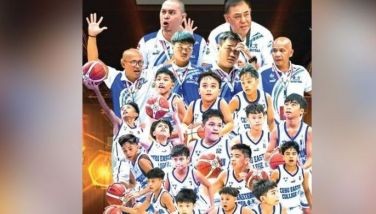Bringing back the Green one seedling at a time
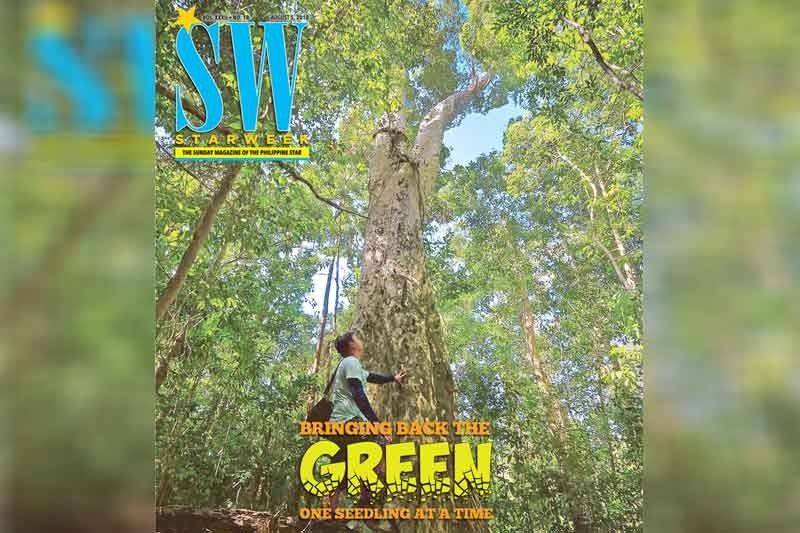
MANILA, Philippines — Before drastic modernization, the Philippines was covered with seemingly endless greenery. According to the Department of Environment and Natural Resources (DENR), about 90 percent of the total 30 million hectares of land area used to be lush forests.
From being a prominently green mark on the map, the Philippines has become one of the most deforested countries due to decades of abuse and mismanagement. From about 70-percent recorded forest area in the country in 1900, it has drastically slipped to 18.3 percent in 1999, according to Environmental Science for Social Change.
Currently, we belong to the 17 mega-diverse countries containing more than 70 percent of the Earth’s biodiversity. However, we are also the second-hottest biodiversity hotspot, which means that our biologically rich land is severely threatened with destruction.
As of 2011, the Conservation International Organization recorded that only seven percent of our forests remain while 839 Philippine plants are threatened.
Today, we are paying the price of our neglect. Deforestation is the exponent of numerous problems we face today, such as water and food insecurity, habitat destruction and extinction, and ferocious mudslides and floods.

Participants plant seedlings during BINHI Day 2018 in Antipolo.
To help save the country’s forests, several greening and environmental programs have been conducted by the government and private organizations. However, many of these greening programs are indiscriminate towards the propagation of foreign and exotic trees like mahogany, acacia and gmelina.
Contrary to popular belief, these foreign exotic tree species may ultimately harm the environment, as they invade the biodiversity of the Philippine forests. If balance is disrupted, native tree species may no longer proliferate.
Planting a green future
Several groups have taken steps to address the worsening deforestation in the Philippines. Taking the lead is BINHI, a reforestation program of the Lopez Group of Companies being spearheaded by one of its subsidiaries, Energy Development Corp. (EDC).
BINHI, the Filipino word for seedling, is one of the country’s Commitments to Action made by EDC chairman emeritus Oscar Lopez during the Clinton Global Initiative in December 2008.
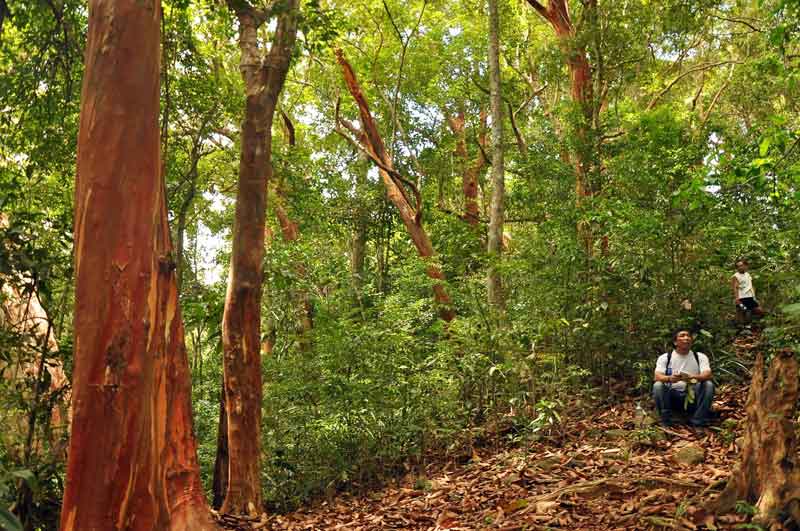
The majestic Malayabas trees have been deemed critically endangered.
It is a greening legacy program, a species-conservation initiative that focuses on rescuing and propagating threatened native tree species, making it a pioneer in corporate-led reforestation programs in the country. It infuses a new dimension to reforestation with its holistic, scientific and multi-pronged approach in reviving the country’s forests.
“BINHI will show that there is always a new, innovative and more audacious way of providing a truly Filipino solution to the environmental crisis. But most importantly, BINHI will share in the collective effort and in the responsibility to protect the environment and to safeguard this land for the Filipinos yet unborn,” Lopez said during the program’s launch.
Since the establishment of BINHI a decade ago, it has contributed to the increase of forest cover in several municipalities of Negros, including Dumaguete City, Zamboanguita, Dauin and Valencia.
Together with EDC’s Southern Negros Geothermal Project, they were able to plant over two million seedlings between 1990 and 2015.
The P405-million project was primarily launched to let the public imbibe the importance of planting trees and its valuable link to sustainable development.
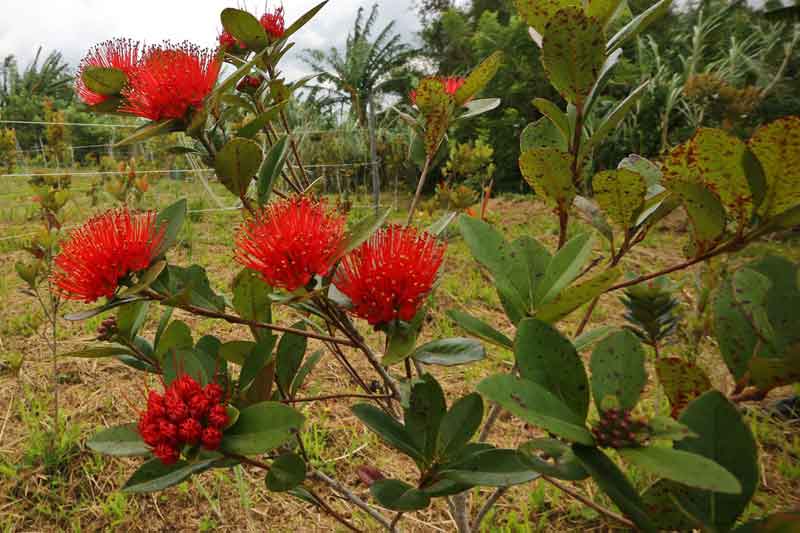
Red Mangkono blossoms.
“Binhi helps us maintain our carbon-neutral operations through the forests that we manage in our geothermal areas. It remains one of the most ingenious ways to avert an environment crisis by saving and propagating premium endangered native trees as it helps us sustain our steam resource,” Richard Tantoco, EDC President and COO, tells STARweek. “Binhi is EDS’s share in the collective effort and responsibility to safeguard the Philippines for future generations. Binhi is our gift to all Filipinos now and in the future.”
The root of success
With the help of other private companies, business associations, government instrumentalities, academic institutions, socio-civic groups and private individuals, BINHI is now about to reach 10 fruitful years.
The minds behind the project came up with a program dubbed BINHI Trees, where each “tree” offers a unique and interesting menu of partnership opportunities for anyone who wants to help regenerate the country’s forests.
To multiply and propagate the rescued tree species, EDC forests the watersheds within its geothermal reservations. They have also partnered with 152 academic and non-governmental organizations from 16 regions that have dedicated a specific area to plant these tree species. The BINHI team, then, provides technical support and expertise to ensure the healthy growth of the seedlings.
Aside from propagating threatened native species, the program also promotes on-site nature appreciation by developing ecotourism forest parks. This module will preserve the natural beauty and ambience of the country’s forests by designating them as ecotourism spots.
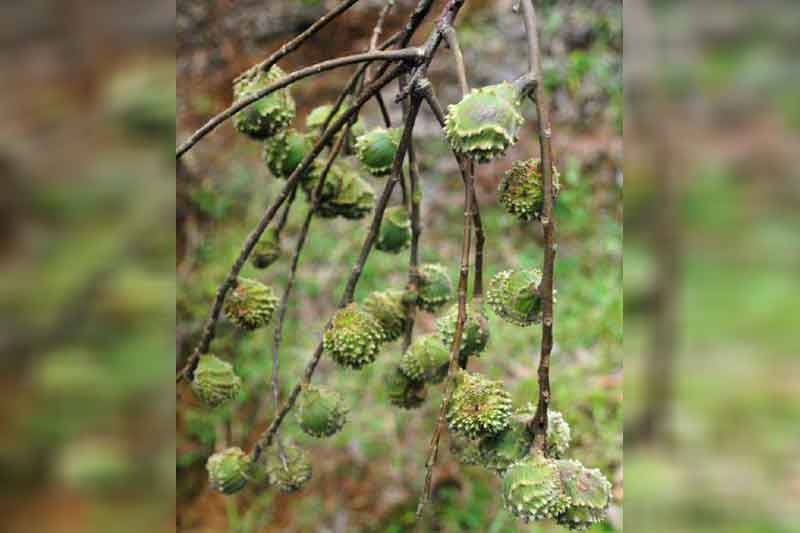
The fruit of the Philippine oak.
In support of the government’s reforestation efforts, EDC partnered with the DENR’s Biodiversity Management Bureau in 2016 under its Adopt a Wildlife Species Program.
Through the partnership, select threatened native trees under the BINHI program will have their ecological statuses updated as proof of their successful propagation. EDC is able to contribute to the national biodiversity conservation program, as the partnership focuses on updating the Philippine red list of threatened tree species, protecting the identified trees in surveyed areas and planting the species to save them from extinction.
A collaboration with DENR, Department of Tourism (DOT) and local government units will also enable EDC to convert select areas in its geothermal project sites into ecotourism destinations. These geothermal ecotourism havens will encourage Filipinos as well as foreign tourists to commune more often with nature, either for meditation, trekking, recreation or simply for relaxation. These designated areas will also provide sanctuary to wildlife species.
To streamline its projects and its developments, BINHI program has set in place four modules: Tree for Food, Tree for Leisure, Tree for Life and Tree for the Future, all contributing to the goal of easing the ill effects of climate change.
The Tree for Food module aims to hasten re-vegetation of denuded forestlands and provide a source of livelihood for the farmers living inside EDC’s geothermal reservation areas.
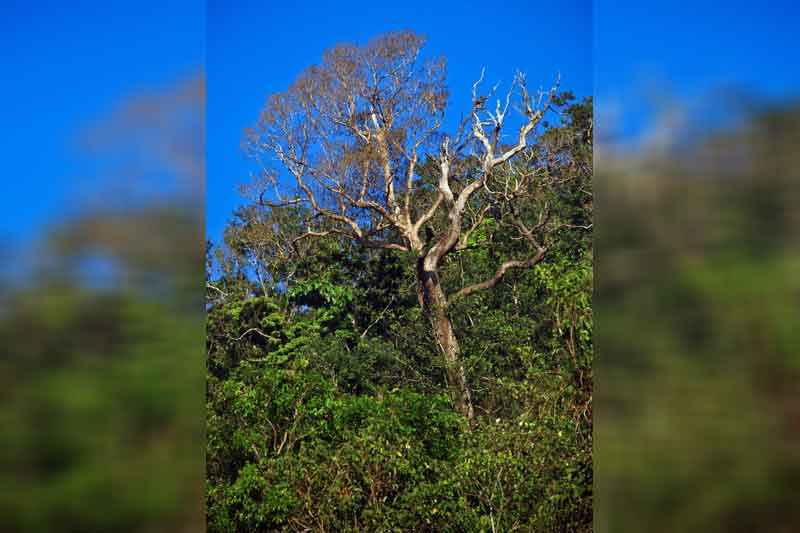
The critically endangered Mapilig.
Tree for Leisure envisions to promote on-site nature appreciation by developing ecotourism forest parks. It will preserve the natural beauty and ambience of Philippines forests by designating them as ecotourism spots.
Under this module, DENR, DOT and local government units will convert select areas in EDC’s geothermal project sites into ecotourism destinations.
The Bac-ManGeothermal Power Plant in Bicol is ecotourism-certified by the DOT. The site is the habitat of two of the world’s largest fruit bats which can only be found in the Philippines – the golden-crowned flying fox (Acerodon jubatus) and the flying fox (Pteropus vampyrus).
Tree for Life assists the natural regeneration of the country’s forests by bridging the so-called “forest gaps,” making rainforest farming the centerpiece strategy of the module.
BINHI eyes to link the forest gaps between important mountain systems to reinforce the wildlife corridor and bring back their once robust biodiversity. Chosen areas will be designated as protection zones for conservation and biodiversity study with such institutions as the University of the Philippines. These forest bridges will be grown to mimic the structure and function of natural systems.
This module also encourages community involvement since forest communities will be enlisted as partners from seedling production to maintenance and protection of the reforested areas.

White buds are starting to bloom.
Forest bridges will be established in the Northern Sierra Madre Natural Park and the Mt. Kanlaon Natural Park.
The Tree for the Future flagship module of BINHI targets to rescue and secure the gene pool of endangered but premium native trees by collecting, planting and growing their seeds or seedlings into “mother trees.”
It plans to secure the survival and proliferation of high-value but fast-dwindling native trees such as yakal, tindalo, kamagong, mangkono and ipil by planting them in each of the 81 provinces and in selected school grounds, public parks, residential estates and historical shrines.
Under the Tree for the Future in 2014, EDC and the University of the Philippines tied up to build the UP Biology-EDC BINHI Threatened Species Arboretum. This project has been able to help 88 endangered species.
Several generations have already massively damaged mother nature. Today, BINHI is set to protect the endangered Philippine forests and make them once again stand proud and lush – one seedling at a time.
- Latest
- Trending














